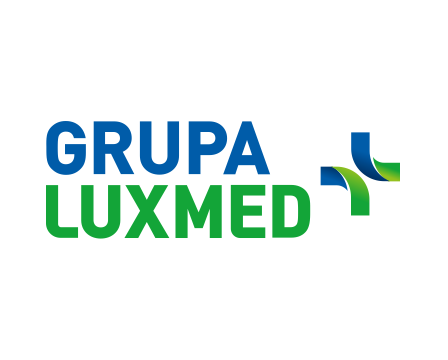

As a provider of medical services, Lux Med is observing dynamic changes in public health in times of crisis, both in the area of physical and mental health. Unfortunately, these changes are not for the better. The Covid-19 pandemic, reduced access to health services, and fear of getting sick have influenced the emergence of a so-called health debt. Delaying treatment has translated into worsening health and increased mortality rates for selected diseases. The consequences are still difficult to assess due to their further impact on the public health. It is impossible to ignore the effects of isolation, the need to adapt to new conditions, fears of SARS-CoV-2 virus infection, worries about family and loved ones, overwhelming fake news or the effects of continued tension caused by Russia’s aggression in Ukraine. Our mental resilience has been put to a test that many of us cannot cope with. There are many more reasons for this.
From the point of view of employers, we are in a difficult position, which requires listening to and understanding the needs of employees. It’s worth considering how to achieve the goals set in the current situation, which are important for the functioning and future of the business, as well as to support employees in improving their physical and mental well-being and, as a result, their health. The dilemma is often the cost of additional employee benefits. The essence is picking the right target and return on investment for wellbeing programs. An increasing number of research results indicate that we can expect a return on the funds spent on these benefits. This return is mainly due to a decrease in sickness absenteeism, presenteeism (which, as US research shows, is more costly from the point of view of the healthcare system and the employer, than sickness absenteeism itself), a reduction in the need to replace absent employees, and the deployment and training of new resources. The results of the study also indicate an increase in productivity. The saying “a healthy mind in a healthy body” is accurate. Being physically and mentally healthier, we are better able to work, which translates into productivity.
As the Health Promotion and Prevention Team in the Medical Division of the Lux Med Group we have been supporting employers in improving the health and quality of life of employees for years. There is a noticeable increase in patients’ awareness of general health and proper lifestyle, and we also better understand the role of preventive health care. Patients are increasingly aware of how important their health choices are. This means that lifestyle translates directly into the quality of life and ultimately whether we live in health or disease. This fact translates into increased interest in individual preventive benefits, as well as in wellbeing programmes and strategies in companies. Employers are beginning to bet on holistic solutions and, optimistically, are abandoning the idea of implementing random actions.
As a team that has been recommending and implementing these types of activities for corporate clients for years, we set ourselves the goal of real and measurable changes in health parameters. The activities we recommend are based on analysis of medical data from electronic records maintained in the system of Lux Med Group facilities. We analyse the percentage of patients in the company making medical appointments, performing laboratory tests, imaging tests, occupational medicine results or patients Body Mass Index. We also monitor the percentage of people who are active smokers. The result of the visits are disease diagnoses, which show us what kind of problems employees are facing. We focus on the most important health problems, the sickness absenteeism resulting from them, the number of days of sick leave for a given health problem. In addition, monitoring seasonality in terms of, for example, monthly sickness absenteeism or diagnoses, allows us to see the relationship between seasons and health (especially seasonal infections or mental disorders). In a longer perspective, it is also possible to see a correlation between negative events in the world like a pandemic, or Russia’s aggression in Ukraine, and an increase in various types of disorders, primarily mental. In addition, activities carried out should be monitored over different periods of time and relating them to the situation in other companies, countries and regions. A great point of reference is precisely the benchmark, which, presented to clients, allows to approximate in what health condition their company is. So health data should be the foundation for targeted actions. They are the answer to employees problems.
Investments in wellbeing programmes bring a number of other benefits such as reduced costs associated with medical care. It is impossible to ignore the increase in work safety, which is ensured by the introduction of practices of performing assigned tasks in accordance with ergonomic principles. An important element of cooperation is the participation of occupational physicians, health and safety committees or health and safety teams themselves in the company’s structures. In addition to the effects that we are able to measure, such activities have a positive impact on brand image. They attract prospective employees or loyalise current ones. As employers, we become attractive by providing unique benefits. For employees themselves, the benefits include access to various activities that improve their mental or physical health, create or strengthen pro-health behaviour. Often the most difficult step is to begin the process of change, which as employers we can provide to our teams with the support of medical professionals, psychologists, personal trainers, nutritionists and other specialists. Monitoring of medical data is an important part of Employee health analysis. Among other things, test results are the result of the patient’s lifestyle, so when taking measures to improve well-being, it makes sense to start with health attitudes. As part of these measures, we focus on proper nutrition, promotion of physical activity, time for rest, recuperation and healthy sleep, spending time on hobbies, passions and interests, prevention of mental disorders and ergonomics at work. These are the pillars on which we build the wellbeing of employees.
In cooperation in wellbeing projects, we exchange experiences with employers to better understand their needs, expected goals and create the best solutions. Building a conscious community of employees and providing them with the best working conditions can therefore be one of the most important factors in business development and the assumed results.



























